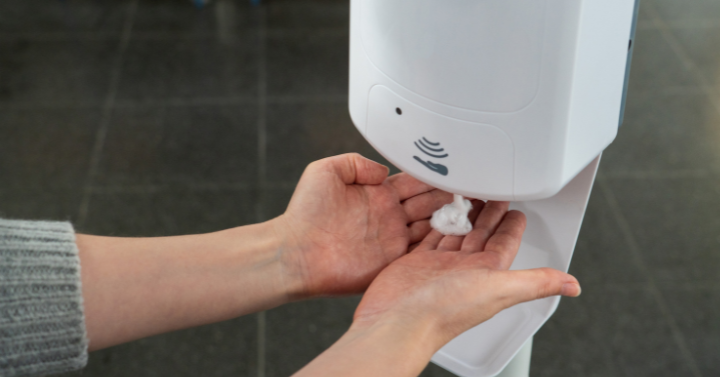After several years of disruption, the away-from-home hand care market is finally settling and some pandemic-induced changes are here to stay. The pandemic seems to have caused permanent shifts in the approach to hand care at industrial and institutional (I&I) facilities. For example, antibacterial hand soaps are witnessing a much higher demand compared to earlier, as are touch-free hand hygiene and paper dispensers. Many facilities’ managers are replacing air hand dryers—which blow germs into the air—with paper towels, and there is a preference for touch-free dispensers to limit germs and the spread of related diseases.
Hand hygiene has become increasingly important with the rise of contagious diseases and the growing need to prevent the spread of bacteria and viruses. One of the key trends in hand hygiene is the increased frequency of the use of hand sanitizers. I&I buildings are now equipped with hand sanitizer stations throughout the premises, for employees and visitors to maintain clean hands with convenience. Moreover, hand sanitizers containing at least 60% alcohol are recommended by the Centers for Disease Control and Prevention (CDC) for effective hand hygiene.
Additionally, employers in I&I buildings are putting continued emphasis on hand hygiene education and training, involving proper handwashing techniques and the significance of hand hygiene, for employees. Training programs and informational posters are commonly used to promote good hand hygiene practices. In addition, there are more hand sanitizer dispensers throughout facilities that need to be maintained, for which “smart” IoT dispensers are an innovation that has entered the space. they involve an Internet-enabled dispenser that can alert janitors’ phones or tablets when soap, sanitizer, or paper products need to be refilled, helping cleaning staff be more efficient.
In 2020 and 2021, the surge in demand for hand soaps and hand sanitizers caused by the pandemic was unprecedented. During lockdowns, the supply chain was disrupted, and at the height of demand, suppliers, distributors, and retailers struggled to maintain stock. Once supply chain challenges were addressed, the market suffered from unpredictable trends as some end-use facilities were closed (schools) or had drastically reduced capacity (office buildings, hotels, and restaurants), while others were using hand care products in much higher volumes than usual (healthcare). Still others, such as schools and universities, sat on large stockpiles of hand hygiene products, and in some cases, the products reached expiration dates before they were used.
Marketers were busy pivoting to meet rapidly changing demands from distributors and end users. These wide fluctuations in demand among customer groups, together with the new trends that seem to have remained in place, have necessitated new research so that marketers can make more informed strategy decisions when it comes to predicting future demands and end-user preferences.
Due to these market dynamics, Kline has fielded a new survey with over 500 end-use decision makers on their usage, preferences, purchase channels, dispenser preferences, and purchase factor importance for hand soaps, hand sanitizers, and hand cleaning wipes.
Overall, most end users expect to increase spending on hand hygiene products over the next two to three years. The primary reason given for anticipated higher spending is price increases rather than increased consumption/usage of hand care products. In fact, many respondents indicate some levels of fatigue when it comes to hand hygiene and say that the frequency of hand washing has returned to pre-pandemic levels. E-commerce—including not only Amazon but also distributor and retailer websites on an increasing level—is being used more than ever by end users to buy hand care products for their facilities. Durability and ease of maintenance are key purchase factors when it comes to hand hygiene dispensers.
In conclusion, hand hygiene trends in I&I buildings are focused on promoting cleanliness, preventing the spread of infections, and ensuring the well-being of employees and visitors. The implementation of hand sanitizers, touchless solutions, hand hygiene education, and antimicrobial products are all contributing to a safer and healthier environment in these settings.

